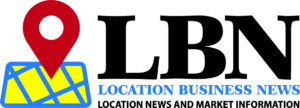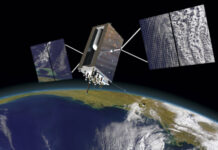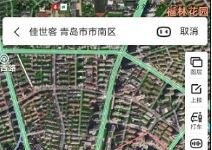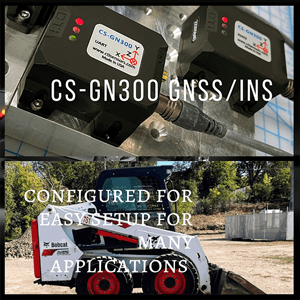By Kevin Dennehy
Contributing Editor for LBS
GPS World Magazine
The big takeaway from this year’s Mobile World Congress was the interest in location data from a growing number of vendors. Although still a small footprint in the cavernous halls of Barcelona’s Fira center, at least 33 companies displayed products and services related to indoor location, which was more than past years, said Bruce Krulwich, Grizzly Analytics founder and chief analyst.
“There are also more major multinational companies that are exhibiting indoor location, including Phillips, Panasonic and Cisco,” he said. “The growth in the area is clear.”
This year’s MWC also featured four different applications of indoor technology, Krulwich said.
“The MWC app included mapping and navigation based on Pole Star’s technology and also proximity marketing and notifications based on MOCA [customer engagement software],” he said. “The security staff had a security management system based on Situm technology,” he said. “The smart badges at the entrances used [Bluetooth low energy] to detect the phone moving through the turnstile.”
Rise of Ultrasonic
Ultrasonic sound was prominent, Krulwich said. “In the past there was a single company, MTI, using ultrasonic sound for positioning, but this year three new players are using ultrasonic: Marvelmind for highly accurate positioning, Yap for proximity and Prontoly for selective content and communication,” he said. “If the technology is effective in real-world deployments, it may be a big step forward in increasing accuracy using existing phone technologies.”
Modulated LED lighting, also known as visible light communication, is receiving more interest. “Phillips was demonstrating a solution in that space this year,” Krulwich said. “I2Cat also returned with an LED solution, and Oledcomm is a new entrant in that space.”
Although beacon prices have gone down, the key is indoor positioning’s scalability and solution maturity. “Many of the solutions shown at MWC addressed scalability, including Estimote with self-mapping beacons, indoo.rs with SLAM-based automated configuration and Situm with infrastructure-free positioning,” Krulwich said. “The solution maturity is evident from the number of full commercial deployments (not trials) by companies like Pole Star and indoo.rs,” he said.
Another trend is the increasing numbers of high-accuracy systems.
“Quuppa has shown highly accurate positioning at MWC for several years,” Krulwich said. “But this year they were joined by powerhouse Phillips and by newcomer Marvelmind. All three showed centimeter-level accuracy with very fast response, each with a very different technology.”
Indoor Location
The lack of indoor location vendor participation at January’s National Retail Federation BIG Show in New York is a cause for concern, Krulwich said.
“Indoor location has been expected to cross the chasm for years, and it’s still stuck among early adopters,” he said. “But recent improvements in accuracy and in the maturity of the solutions, with easier configuration and integration into back-end systems, should lead to more full commercial deployments and then larger adoption in retail. It is also important to note that retail is not the only application of indoor location. Asset tracking and customer analytics are both growing. We also see a growth in the number of companies developing practical solutions on top of existing technologies, such as MOCA, Qualigon and xAd.”
Quest for Data
Companies that aggregate location data found increased interest at MWC.
Teralytics, which processes data points using predictive algorithms, provides human behavior information based on location. The company is working with not only wireless carriers, but governments and others on smart-city initiatives worldwide, said Luciano Franceschina, Teralytics co-founder and CTO. “We are already working with different verticals, and not just the telco verticals themselves, who are using the location analytics. A top transportation planner in Germany scrutinized our system for a year and now uses it to plan and decide what infrastructure investments to make.”
The company is collecting billions of data points, and aggregating geolocation and demographics to assess human behavior globally. This allows a retailer to assess where to build the next store, or how much capacity a train line should handle. For municipal planners, the data shows what transit system stops are being used more than others, Franceschina said.
Other markets for Teralytics’ data are tourism, retail, hedge funds and automotive, said Lisa Peterson, Teralytics vice president.
“That could be location data that allows auto[makers] to use to see driver behavior,” she said. “A company like Marriott could see why their silver members aren’t upgrading to gold, because they can see their hotel usage patterns. The can see these consumer traits and target their members with better offers.”
The acquisition of location data is more reliable that research methods used by such companies as Gallup, which still uses phone surveys and other antiquated methods, Peterson said.
IoT Growing
Comtech Telecommunications showed off its Location Studio platform that allows customers to build or enhance cloud-based embedded and hybrid LBS applications. The platform includes modular suites with indoor and outdoor positioning, geolocation, fraud detection, maps, search, routing, navigation, real-time messaging and analytics, the company said.
The rise of Internet of Things (IoT) and location hasn’t surprised Comtech.
“My team moved into IoT because it’s impacting a lot of new areas,” said Keith Bhatia, Comtech senior vice president. “IoT objects come down to how cheap you can make the connection and make the device available during the early stages. The momentum is there.
However, the hype that every device will be connected is just not price feasible.”
Comtech is looking for that location price sweet spot when it comes to IoT, Bhatia said. “We are seeing a pull for cheap location. We are seeing significant strides from last year to this year.”
Location company PoLTE partnered with ACS at MWC. ACS will use PoLTE’s LTE-based location tracking to allow business in the manufacturing, industrial and transportation industries to track assets, goods, workers and devices.
PoLTE, which delivers location services both indoors and outdoors, said that while Wi-Fi, Bluetooth and GPS have deficiencies when tracking LTE devices, its system leverages native cellular signals to geolocate 4G and 5G devices. PoLTE uses an advanced radar location technique to transform reference signals in LTE transmissions into precise location.
The company started focusing on LTE positioning nearly seven years ago, said Russ Markhovsky, PoLTE founder.
“Customers are going to be able to embed the available service into platforms and devices next year,” Markhovsky said. “We are undergoing trials and proofs of concepts and are connected to wireless operator’s network test platforms.”
The location information derived from PoLTE’s network is valuable to retailers and others who track a consumer’s spending habits, said John Dow, PoLTE president and chief operating officer
“LTE works everywhere,” he said. “You can track a user’s behavior when they went to Walmart, then went home,” he said. “It’s not a Swiss-cheese approach, as there is persistent location information. Retailers can receive decision-making data that is valuable compared to what’s out there today.”
Other Tech Finds IoT Location Niche
Another technology that is gaining traction with IoT companies is low power, wide area (LoRa) that leverages time difference of arrival (TDOA) triangulation to calculate the position of a device. One company, France-based Actility, says the system works with three gateways that receive data from a device, timestamps it and forwards it to a geolocation solver.
The Actility network geolocation solver collects the timestamps to estimate the device’s position using triangulation. However, a precise time-synchronization mechanism, usually using GPS, is necessary to achieve nanosecond precision time measurement.
“The number of agriculture and tracking applications are growing [for LoRa technology]. We are showing its applicability around Barcelona with a geofence, without GPS, through TDOA time stamping through different gateways,” said Christophe Francois, Actility senior vice president, marketing and digital. “Actility provides a different type of location services in that companies sometimes don’t need to know when the asset is not moving. This might mean to see if an asset like valuable copper in a yard is still there. You don’t need GPS to do that.”
Data Playing Large Role in Fleet Market
Geotab sees continued growth in 5G rollouts and data as key drivers to its European fleet transport market strategy, said Colin Sutherland, Geotab executive vice president, sales and marketing.
“Telefónica has been a great partner here [in Europe]. We continue to try to keep a pulse on the market over here and evangelize our data-centric telematics and 5G enablement,” he said. “We are also very focused on cyber security to keep cars and trucks safe on the road.”
Sutherland says he believes 2019–22 will see continued growth in the fleet market, with focus on data.
“Back in the day, companies focused on either a diagnostic bundle, or a GPS-based [fleet management] bundle,” he said. “What will happen in our industry is a growth of bundled software. There will be a lot of data play with the new business models and suite-specific applications, including data sharing.”
Observations from MWC
- Conference organizers estimated more than 105,000 attendees went to MWC this year. Last year, I said Barcelona was getting too small for the conference, which is has turned into a mini-CES. This year was slightly larger, with the requisite traffic jams, high taxi cab prices, crazy high hotel room prices, unreal crowds and lines. One organizer took offense to my criticism of this huge growth, saying that I had no solutions. Well, yeah, though I love Barcelona as a venue, maybe it’s time to move it to a larger city?
- MWC touts itself as the mobile event of the year. Barcelona crows that it is the most tech-savvy town in Europe. How can that be if Uber and Lyft aren’t even allowed and the alternative is long lines with price-gouging taxis? As a reporter with Asian heritage, I get the business, literally, when I get into a cab (read: inflated prices).
- The high cost of hotel rooms has forced companies to use Airbnb and other sites to get lodging. Sad thing is that lodging may be in Badalona or Sitges, which require long train rides and eat up precious conference time. Again, maybe it’s time to either move it, or talk to city officials about getting more rooms in town.
- Despite all of my criticism about the show, it still is one where you can meet people, network and manage the huge halls, which are positioned in one large building. You can’t do that at CES anymore as meetings and exhibits are spread over the convention center and various hotels. You may never see an executive or contact again after one meeting at CES, but MWC still has the feel that you can still rub elbows with some of the bigwigs at either the Fira or offsite meetings and receptions.

























